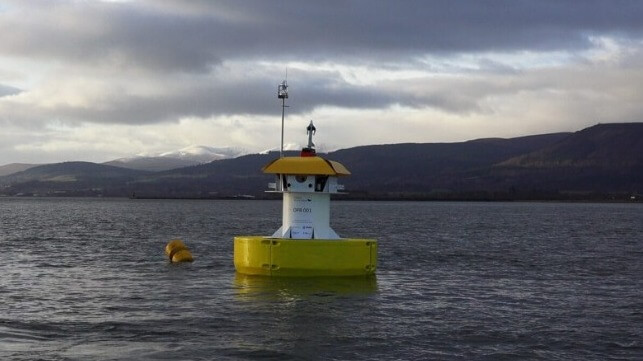Sea Trials Completed on First Power Buoy for Offshore Wind Farm Vessel

While wind farms are promoted as an environmentally-friendly source of renewable energy, offshore farms due to their location often in challenging sea conditions require crew transfer and service vessels that mostly rely on diesel power. The vessels typically have to idle at the wind farms after transporting crews and because of the location of the wind farms the CTVs require to be re-charged offshore or they must still rely on diesel.
An emerging sector is focusing on developing a source of renewable power that can eliminate the emissions from idling vessels, which in the case of the offshore sites account for the majority of CO2 emissions from an operational wind farm. Countries such as the U.K. have also called for the conversion of the support vessels to zero emissions. These new technologies are designed to support battery operations.
Oasis Marine Power based in the U.K. reported that it has completed sea trials for the first stage of testing of its offshore charging station. The Oasis Power Buoy, which the company says is the first of its kind to reach sea trials, is an offshore mooring and charging station that receives its power from wind turbines or other sources. Initially targeting wind farm crew transfer vessels (CTVs), the Oasis Power Buoy provides a solution for offshore charging of hybrid and all-electric vessels.
The sea trials were held in the Port of Cromarty Firth, Scotland during January in the first of a series of tests. The Oasis Power Buoy will now be undergoing further testing and optimization, including sustained sea trials.
Earlier this week, Maersk Supply Services announced the launch of a new company that is developing similar technology. Called Stillstrom, the new company plans to demonstrate its power buoy later this year for vessels at an offshore wind farm operated by Ørsted. Testing of the Stillstrom power buoy is expected to last for six to nine months with Maersk saying it hopes to commercialize and install the technology at ports around the globe to reduce the emissions from idling vessels.
